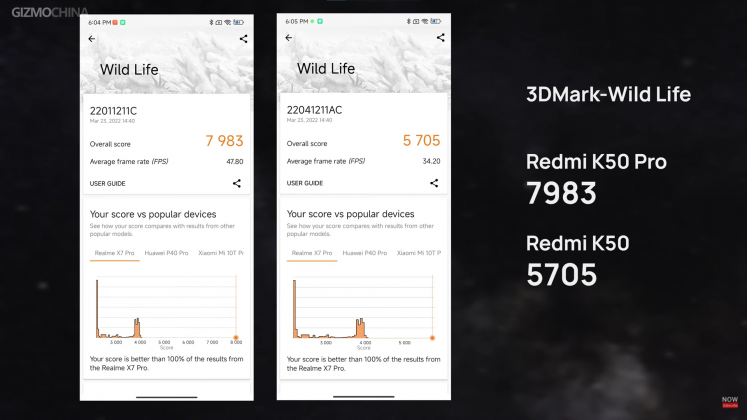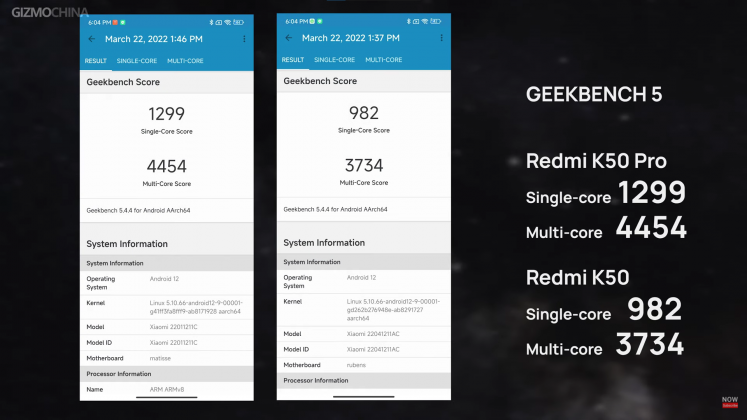Last week, Redmi debuted the highly anticipated Redmi K50 and Redmi K50 Pro smartphones in China. The devices come with impressive spec sheets and feature new SoCs from MediaTek, so we at the Gizmochina team got our hands on these new devices as fast as we could to share with you our first impressions.
Redmi K50 and Redmi K50 Pro Unboxing:
Redmi K50 Pro full review:
The devices come with similar minimalist packaging to the previous generation and have the K50 and K50 Pro model names printed on the box. On the side, the box informs us of the charging capabilities and the screen resolution of the devices. Redmi’s fire-breathing dinosaur mascot Kino greets you when you open the box, and below it, we find the smartphones themselves. The box also includes USB type-C cables and a 67W charger for the K50 and a relatively bigger 120W charger for the K50 Pro.
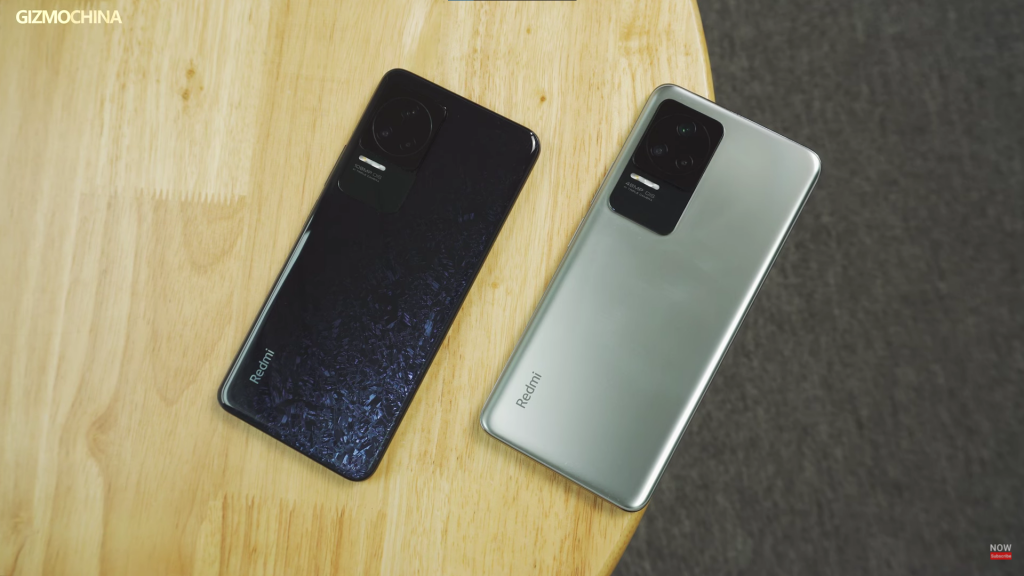
Coming to the phones themselves, the K50 and the K50 Pro look very similar to each other in terms of screen and design. The only thing that differentiates the two is the main sensor’s camera resolution, which is written below the camera module. Additionally, the camera module looks pretty similar to devices like the iQOO 8 series and the Xiaomi CIVI but with a different camera arrangement. The devices feel pretty comfortable in the hand. However, it is worth mentioning that the side frames of the devices are made of plastic, which doesn’t feel as good as the metal frames.
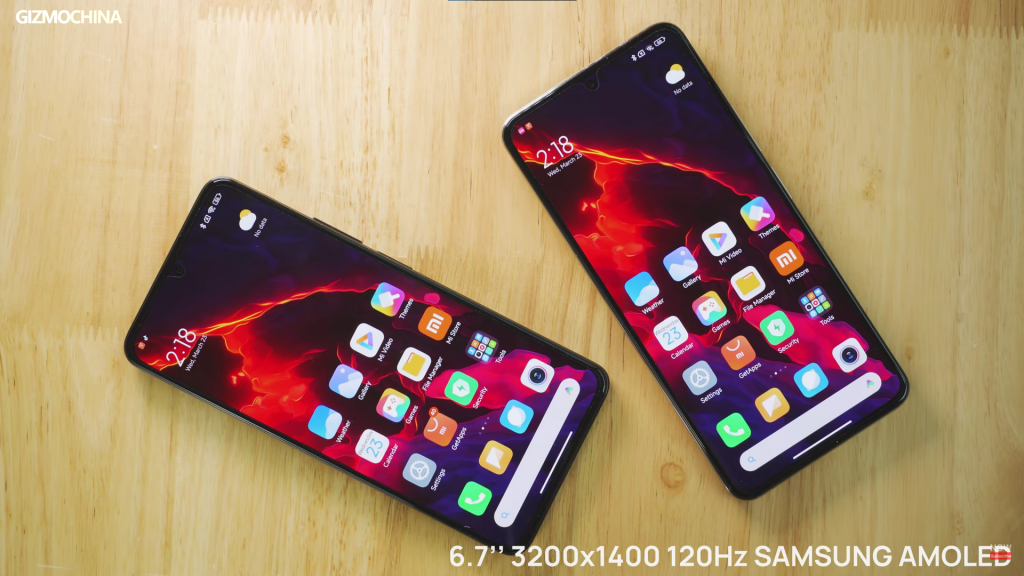
On the front, the two devices are indistinguishable as they both feature a flat 6.7-inch 2K (3200x1400p) 120Hz Samsung AMOLED display with pretty narrow bezels and a small punch hole for the selfie camera centered at the top. The phones slightly disappoint as they don’t have an in-display fingerprint sensor and are rather fitted with a side-mounted one on the power button.
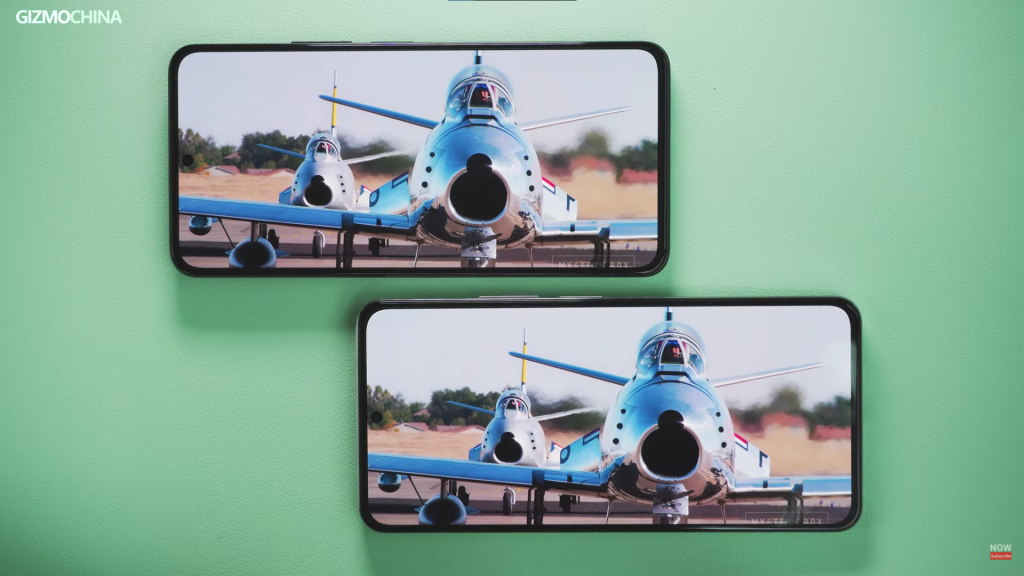
The 2K display on the vanilla K50 makes it especially attractive as it also offers Dolby Vision and supports HDR content with a max brightness of 1200nits just like the Pro variant. Both the K50 and K50 Pro have Gorilla Glass Victus protection for their screens. The devices get a dual speaker setup for stereo audio output that comes certified by Dolby Atmos.
Coming to what’s under the hood, the K50 comes with the newly launched MediaTek Dimensity 8100 SoC, which has been receiving much praise as of late. The SoC is based on TSMC’s 5nm node, which gives it better thermals and power efficacy than the Snapdragon 870, while the SoC is churning out performance close to that of the Snapdragon 888.
The K50 Pro, on the other hand, houses a Dimensity 9000 chipset which goes head to head with Qualcomm’s Snapdragon 8 Gen 1 chip while outperforming it in various metrics.
We quickly ran some benchmarks on the two devices to get an idea of their performance. In the 3DMark Wild Life test, the Redmi K50 Pro scored 7983 points while the vanilla K50 managed a score of 5705 points. In the more CPU-intensive Geekbench 5 tests, the K50 Pro scored 1299 on the single-core test and 4454 on the multicore test. Coming back to the vanilla K50, it scored 982 points on the single-core test and 3734 points on the multi-core test.
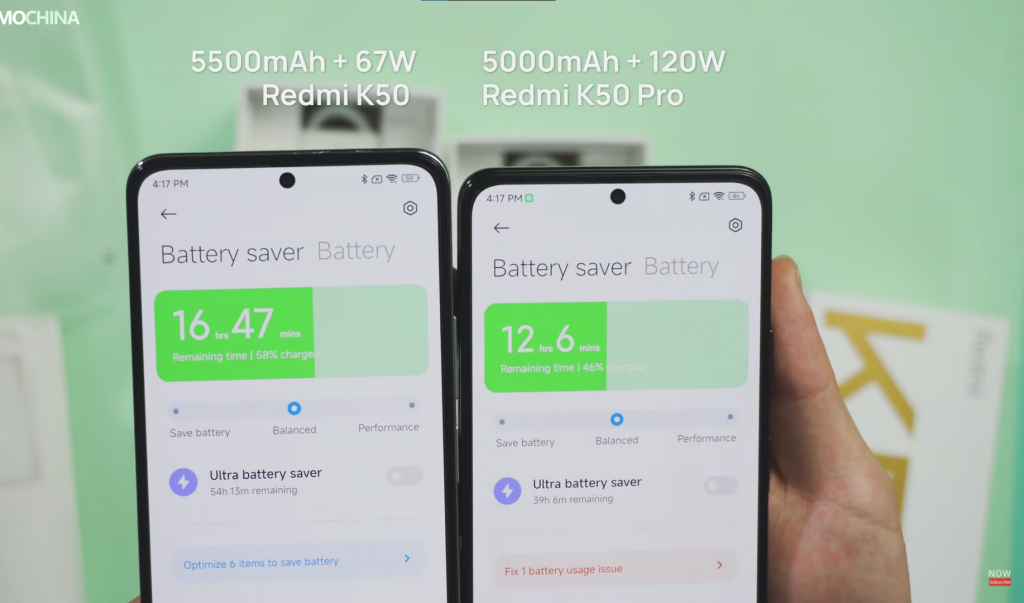
The power solution on these devices is also interesting, as the K50 gets a bigger 5500mAh battery with a comparatively slower 67W fast charging support, the K50 Pro features a 5000mAh battery with super-fast 120W charging.
Last but not the least, the camera setup on both devices feature optical image stabilization for the main lenses. The Pro version features a 108MP primary snapper accompanied by an 8MP ultra-wide camera and a 2MP macro camera. The vanilla version gets a 48MP primary coupled with an 8MP ultrawide and a 2MP macro shooter.
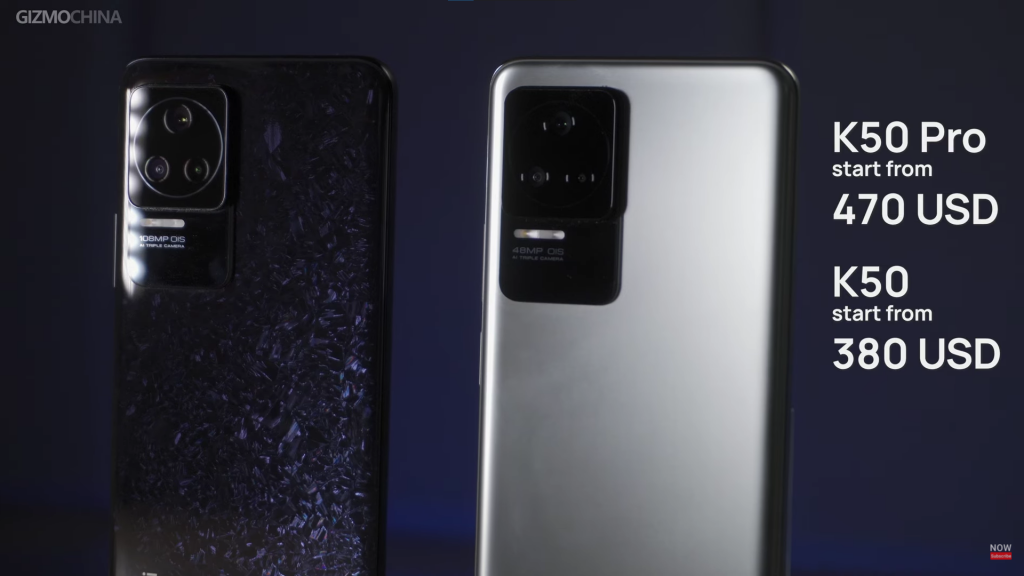
The smartphones genuinely seem quite amazing as far as first impressions go, and they might turn out to be true flagship killers of the current generation of smartphones. However, we would like to conduct more tests on it, like testing out the battery performance, the performance of the devices under prolonged use, the camera quality in various scenarios, and also the sound quality of their stereo speakers. For all this and more, stay tuned for the upcoming detailed review of the Redmi K50 and K50 Pro devices.
We are also giving away the Redmi AirDots 3 Pro Genshin Impact limited edition TWS earbuds, so if you are interested, you can participate by following this link.
RELATED:

